Ah, so you’re wondering how to get into DnD, huh? There’s a lot of information out there, but I’ve compiled everything into three items:
- D&D Stuff to Buy – i.e., the stuff/setup
- How to play Dungeons and Dragons – i.e., the rules
- How to start a DnD campaign – i.e., the people
It’s funny, it wasn’t that long ago that Dungeons and Dragons was considered to be too nerdy to be considered a respectable hobby. Now, however, things have changed. Whether that’s due to the wildly popular Stranger Things, or the general state of gaming, it’s hard to tell. Regardless, D&D is incredibly rewarding and I’ve compiled everything you need to know to play. Continue reading to get started!
D&D Stuff to Buy
Before you get into DnD, it’s important to keep in mind some of the things you’ll need to purchase. I remember having fun when I first started, but that was primarily due to my friends having played before (and being kind enough to buy a lot of the stuff I needed for me). Here’s a quick list of DnD stuff to buy (or consider buying) before you start:
D&D Dice
Dice would be potentially the most important purchasing decision, as many events in a DnD campaign are decided by a dice roll. There are so many great options here, both on the high and low end.
D&D Note Taking
I wrote a whole blog on how to organize DnD notes. At the end of the day, I would recommend some type of journal to keep track of what’s going on. Here are a few good options:
The RPG Journal
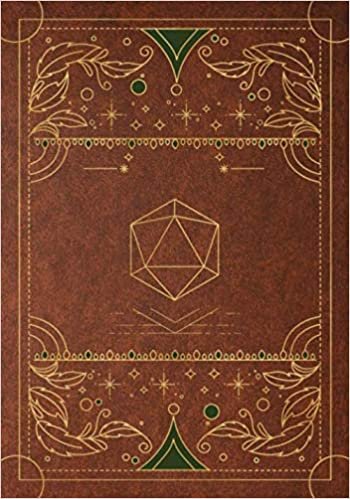
3D Dragon Journal
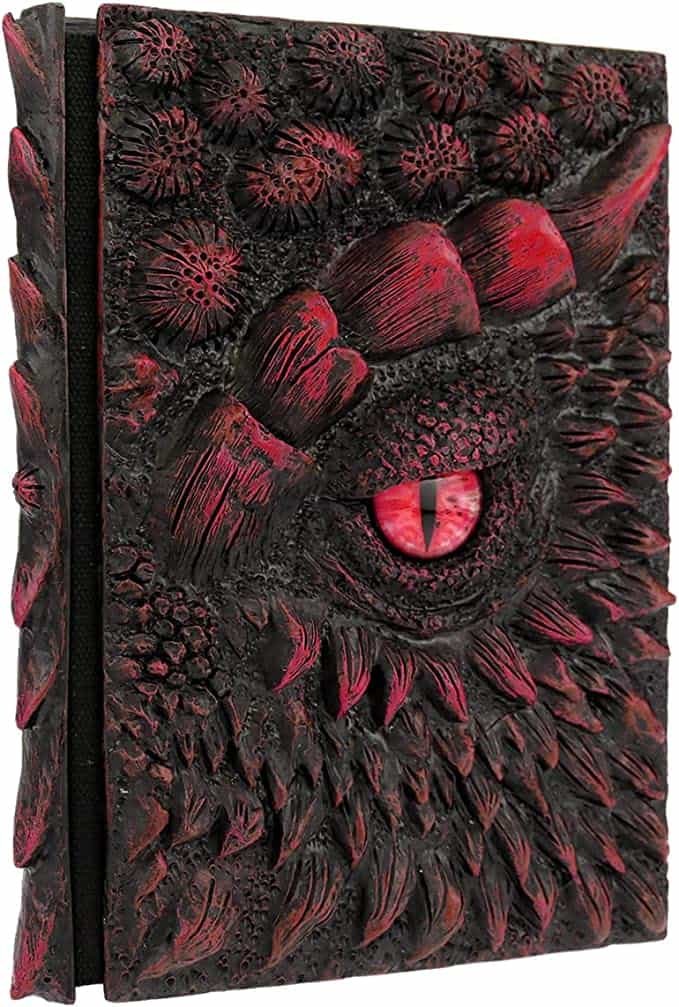
MITO 2Pcs DND Writing Notebook
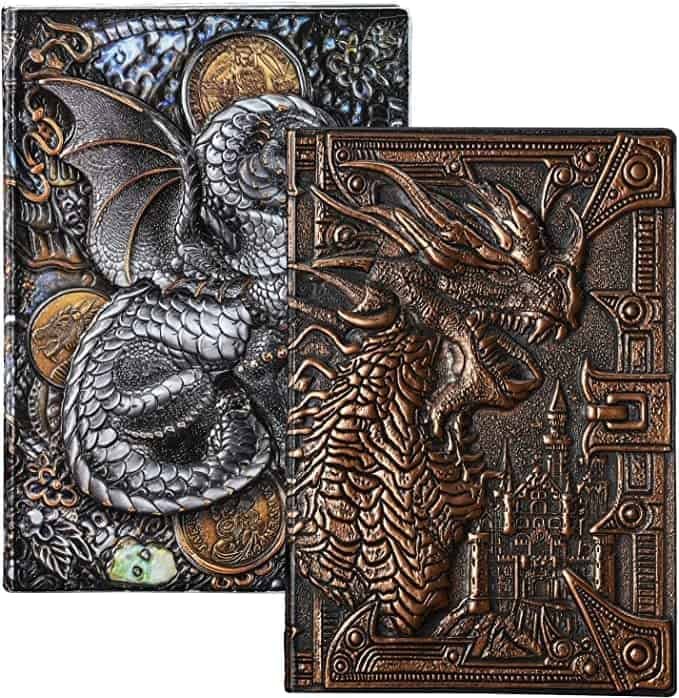
ZYWJUGE Dragon Journal Notebook

Click here to see more D&D journals.
Dice Trays
I started out thinking this was unnecessary, but having seen some players recently play without a dice tray, I’m convinced every player should have one. It can be so annoying having to make rolls all night and having your dice roll off the table. A dice tray will prevent this. Here are some interesting options to consider:
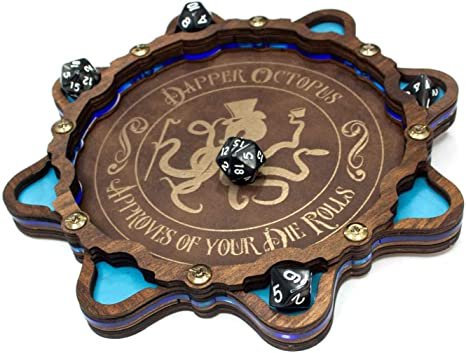
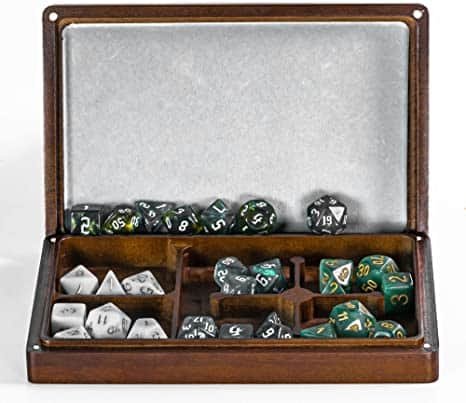
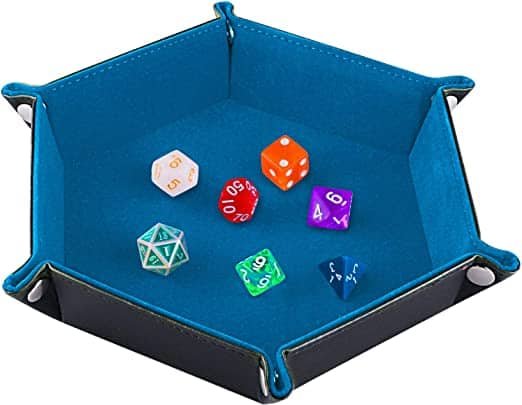
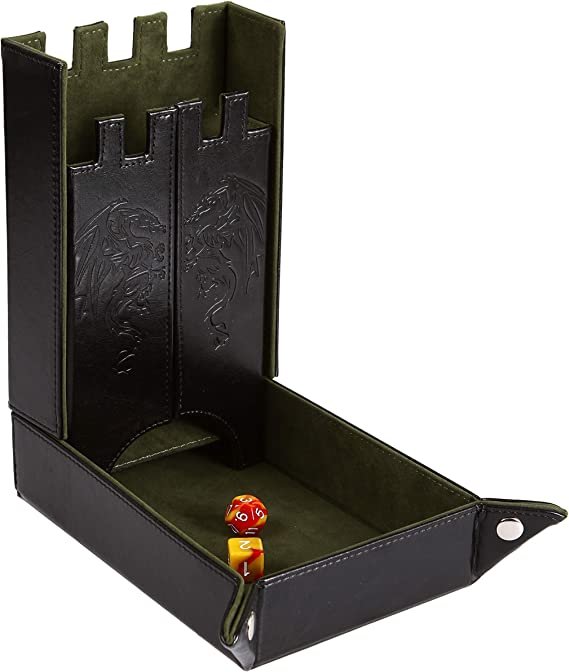
Also, click here to read more on DnD stuff to buy.
D&D Terrain
Terrain can make a DnD campaign really come to life. While it’s possible to envision the road and buildings and characters, D&D terrain allows you to see that on the table. Here are a few good options for D&D terrain:
Epochscapes

A new player in the space, Epochscapes has been revolutionizing the way tiles and terrain work with modular tile and terrain pieces. With completely-customizable tiles that are two-sided, you have a ton of versatility. Plus, they sell full kits that include terrain and scatter pieces. As of 7/19/23, they’re still fulfilling on their Kickstarter campaign, but are taking pre-orders sometime this year.
Dwarven Forge
Dwarven Forge has been around for a while now. I would say they have some of the more impressive kits out there. The only problem is that they advertise as being modular, but the modularity takes some time to put together, and pieces can’t be constructed on the fly.
Other Terrain Options
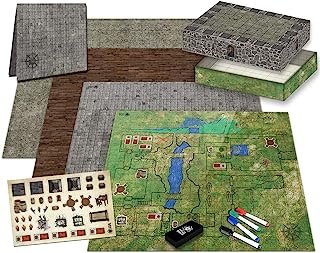
How to Play Dungeons and Dragons
In this section, I’ll quickly breakdown the mechanics of D&D. The game itself can, honestly, be as technical or carefree as you want it to be. There are many rules that are set in stone, but many instances that lie in the grey and are up to the discretion of the GM.
Now, while each campaign is different, there are a variety of elements that are found in basically every session.
World Building
This is typically handled by the GM, although some elements require help from players:
- GM: Builds the main world that characters live in, or pulls from resources currently available. Essentially, a GM will flesh out the main pieces of a world, including everything from who the people in the world are, to what nations are allied with what other nations, even down to the culture of those nations.
- Resource: This article on The Best DnD Heist Ideas
- Players: While a GM will try to build out as much as possible in a world, there’s a lot to think about. Players can play a pivotal role here by writing out a thorough character backstory. This can give some great context behind your character and their motivations, but it can also fill in some blank parts of the world as well. If all the players in a DnD campaign write a thorough backstory, it helps make the world feel real (and also helps players feel invested because their characters’ stories are felt in the world).
- Resource: Unique DnD Character Ideas
Conflict
To be honest, there wouldn’t be much of a reason to play a DnD campaign without there being some level of conflict. In fact, if I were to simply explain DnD it would be “Conflict Resolution”.
Here’s how a GM and players interact and deal with conflict in a Dungeons and Dragons session:
- GM: Creates the conflict
- Players: Resolve the conflict (but also create conflict, depending on the player, haha)
That’s pretty simplified, but it’s true in my experience. Going back to what was said above, the GM’s role is to create the world, along with what’s happening in the world.
There needs to be some reason for this group of players to WANT to be around each other. Without some common interest or goal, a DnD session can feel meaningless. It’s vital that this group of former-random people in a world has a common goal to work towards. However, it’s NOT necessarily important for these players to all be motivated by the same things.
Creating Characters in the World
Once a world has been created, it’s time to create characters in that world to fill it out. Here’s what GMs and players can look forward to:
- GM: As mentioned before, GMs play the role of unraveling the story and conflict, but they also play the role of every NPC in the game. Some GMs will whip out different accents based on the type of world or town they’re in, but that’s not necessary. As a GM, it’s a good idea to have a finite number of necessary characters; these would be those characters that will influence the overarching plot.
- Players: Players have it (relatively) easy; all they need to do is build out their character. Obviously, that’s easier said than done, as there are full-blown guides on how to write a DnD character backstory. Having said that, it’s the role of the players to focus on their characters. You should be intimately familiar with every aspect of your character, from primary abilities to race or class-specific feats. Knowing this will make things much easier when you’re roleplaying.
- Resource: How to Roll for Stats in DnD 5E
- Resource: 10 Unique DnD Character Ideas to Try Out
Roleplay
Ah, the part that many who have not played DnD would cringe at: roleplay.
It’s true that roleplay in DnD can be nerdy, but there’s nothing wrong with that at all. In fact, I wrote a full blog post on how to be a good DnD player, and this was my #1 piece of advice:
The most important tip for new D&D players is to go all in. Learning the rules and machinations of the game will come, but your mental approach to the game is most important at first. If you’re not fully committed to the game, it’s easy for your character to feel bland and one-dimensional.
Seriously, it makes a massive difference when everyone stops thinking about how weird or nerdy what they’re doing is, and just goes all in and decides to have fun with it.
When I first started playing DnD, I was obsessed with battle mechanics, and focused very little on anything outside of that. Over the years, however, my approach has shifted; I’m much more focused on roleplaying character interactions outside of battle.
The funny thing is I’ve had so much more fun!
- Resource: How to Roleplay in DnD
Battle
You’ll want to take some time to understand how battle mechanics work in DnD. There are plenty of resources out there, but here’s what you need to know:
- At the beginning of an encounter, the party will roll for initiative. This will decide which characters will have their turn in which order.
- Once this has been decided, each character plays in turn until the battle is over.
- The party works together until the conflict has been resolved.
Solving “The Problem”
In many DnD campaigns, there is an overarching “problem” that’s happening in the world. This is true for both one-shots (where a group gets together and resolves this problem in a night) as well as full-blown campaigns.
I personally think DnD has similarities to murder mystery games. A lot of work goes into asking NPCs questions to figure out what’s going on and who to trust, along with rolling to see if those NPCs are telling you the truth or not.
Can You “Win” DnD?
This is a great question. With a one-shot, there’s a clearly defined win or lose scenario. The game wraps up in (typically) a night. With a full-blown campaign, the idea of “winning” the campaign becomes more vague. Some campaigns go on for years and years. In these cases, I would say it’s not about “winning” the game but getting together consistently and having fun.
How to Start a DnD Campaign
Now that you have a basic understanding of what to buy, along with what the rules are, it’s finally time to take a look at how to get into DnD.
Essentially, it all hinges on the people. If you already have an interested friend group, you’re set! If not, there are some resources out there that will help you find DnD players. In the meantime, let’s take a quick look at the role of GM vs players.
The Role of the GM
A D&D campaign relies on an individual to, essentially, run the show. A GM plays the role of revealing the world, and roleplaying every character in the world (outside of the players’ characters).
It’s important for the GM to have a good-enough understanding of the game’s mechanics and be capable of making decisions based on what players ask.
Here are a few of the things the GM will do in a DnD session:
- Understand the world/world events – Although it’s not necessary to have every plot point written out, it is important to have a general idea of the world and what could be going on.
- Understand who the important NPCs are in the world – A GM will be busy acting out so many NPC encounters. To make things easier, it’s a good idea to know who the big players are in the world, and have some idea of how they act, what their motivations are, etc.
- Understand battle mechanics – It’s important to have a good understanding of how battle mechanics work; this helps you guide the players through an encounter quickly.
- Be open to new ideas – It’s always a good idea to operate under the rule of “yes, but…” This means, even if there’s a bad role (or a badly formed idea), it’s so much more fun to say yes and move forward than to consistently deny players from their creative ideas.
The Role of DnD Players
A DnD player’s role is to just show up!
Ok, not really. Here’s what you should keep in mind if you’ll be a DnD player:
- Learn the rules
- Just go with it
- Be ok with something not going your way
- Have an acute understanding of your character, which includes:
- Background
- Class abilities
- Race abilities
- Items
- As you become more experienced, start thinking through and acting out scenarios while in character – it can be easy to resort to talking with other players about what’s going on; try to do this in character as that’s much more fun!
Here are some additional resources:
Frequently Asked Questions
Again, having played DnD for years, there are a handful of questions I get asked by potential players wanting to get insight before trying it out.
Is D&D Hard to Get Into?
Not at all! The primary thing many players struggle with is getting a solid group of players together that are able to meet consistently. If you have that, D&D is quite easy to get into!
What Age Should You Start D&D?
Honestly, I think you can start D&D at any age! I’ve heard of kids playing and loving the game. It’s a great way to get out of your comfort zone at any age and learn some necessary life skills.
Hey there, I’m Alexander King and I’ve been playing video games and RPGs for years!
While playing, I found that there’s so much information that’s difficult to find in this space; I created The Daily RPG to make that information a click away. So follow along for RPG guides, tips and walkthroughs, product recommendations, and more!

